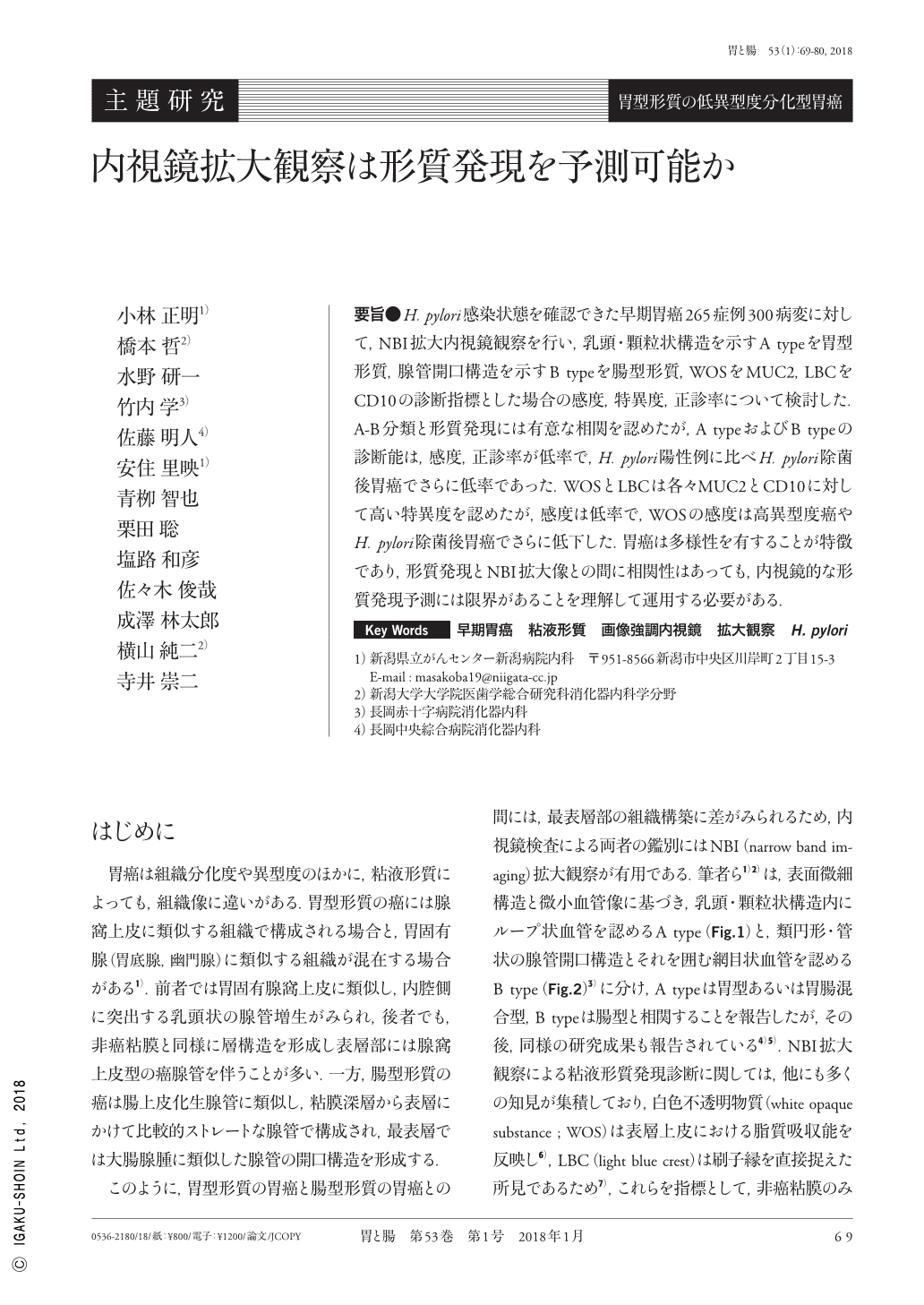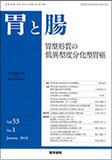Japanese
English
- 有料閲覧
- Abstract 文献概要
- 1ページ目 Look Inside
- 参考文献 Reference
- サイト内被引用 Cited by
要旨●H. pylori感染状態を確認できた早期胃癌265症例300病変に対して,NBI拡大内視鏡観察を行い,乳頭・顆粒状構造を示すA typeを胃型形質,腺管開口構造を示すB typeを腸型形質,WOSをMUC2,LBCをCD10の診断指標とした場合の感度,特異度,正診率について検討した.A-B分類と形質発現には有意な相関を認めたが,A typeおよびB typeの診断能は,感度,正診率が低率で,H. pylori陽性例に比べH. pylori除菌後胃癌でさらに低率であった.WOSとLBCは各々MUC2とCD10に対して高い特異度を認めたが,感度は低率で,WOSの感度は高異型度癌やH. pylori除菌後胃癌でさらに低下した.胃癌は多様性を有することが特徴であり,形質発現とNBI拡大像との間に相関性はあっても,内視鏡的な形質発現予測には限界があることを理解して運用する必要がある.
We evaluated 300 samples of early gastric carcinomas detected in 265 patients with confirmed Helicobacter pylori status. NBI-ME(Narrow-band imaging with magnifying endoscopy)findings for early gastric carcinomas were classified into two types based on surface microstructure:papillae and pits. The mucin phenotype and NBI-ME results were significantly correlated(p<0.001). WOS(white opaque substance)and LBC(light blue crest)revealed a high specificity for immunohistologically positive MUC2 and CD10, respectively. However, when we predict mucin phenotype using NBI-ME, the sensitivity and accuracy of the two types of microstructure, WOS, and LBC were not satisfied, especially after H. pylori eradication. We should recognize the limitations of NBI-ME findings in accurately estimating mucin phenotype.

Copyright © 2018, Igaku-Shoin Ltd. All rights reserved.


